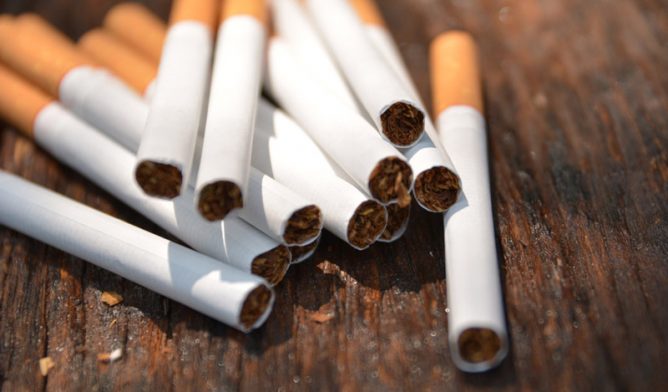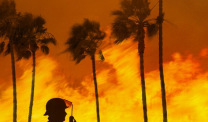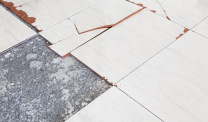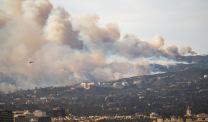Toxic Black-Market Cigarettes Fuel Mesothelioma Concerns
Asbestos Exposure & BansWritten by Lorraine Kember | Edited By Walter Pacheco

The Australian government’s plan to see around 300,000 people quit smoking by 2020 has backfired.
A tobacco tax hike of a 12.5 percent over a four-year span has driven the price of cigarettes to $40 a pack and rising.
As a result, avid smokers are turning to illegally imported cigarettes to fuel their habit. The trend has resulted in the emergence of a flourishing black-market industry linked to organized crime.
Up to 14.3 percent of tobacco consumed in Australia comes through the black market, with a wide range of brands and counterfeit imitations sold “under the counter” by shop owners and other individuals across the country.
The trend has financially impacted small business owners selling legitimate tobacco products. For consumers of the illegal cigarettes, it has caused a far more sinister reason for concern — the possible contamination of carcinogens such as asbestos.
Asbestos and Other Impurities Found in Illegal Cigarettes
Tests on counterfeit cigarettes from China have shown alarming results.
Each cigarette is packed with up to 80 percent more nicotine and emits 130 percent more carbon monoxide.
Worse still, many contain other impurities such as rat poison, traces of lead, dead flies, human and animal feces and asbestos.
Asbestos is a known carcinogen responsible for mesothelioma and other life-threatening respiratory diseases.
The majority of illegal cigarettes come from Asia, predominantly out of Yunxiao County in China.
Production of fake cigarettes in China has skyrocketed during the past decade, making it the world leader in counterfeit cigarettes.
Factories hidden underground or well-enough disguised to be unrecognizable are churning out an unprecedented 400 billion cigarettes each year to be sold in cities around the world.
The industry is dominated by highly organized crime groups, who see the illegal tobacco trade as a low-risk, high-reward opportunity.
Attempts by the Chinese government to stop the trade are met by street riots and machete-armed manufacturers. Each year several private investigators are murdered in retaliation killings.
Timeline of Illegal Tobacco Entering Australia
With Australia now having the highest-priced cigarettes in the Asia-Pacific region, the country has become an attractive market for organized crime.
“We are seeing an increase in organized crime entities involved in this,” Roman Quaedvlieg, former CEO of the Australian Customs and Border Protection Service, said in the 2015 senate estimates. “I put it down partially to the fact that the excise in duty payable on tobacco is increasing.”
Criminal groups are flooding the country with tobacco through sea and air cargo, along with passenger luggage. As cigarette prices continue to rise, more and more smokers are expected to turn to cheap, illegally imported cigarettes.
- 2014: Roughly 2 tons of undeclared loose tobacco with an estimated tax revenue of $1.5 million entered Port Melbourne from Vietnam, hidden in foil and labelled as “Pandan tea.”
- 2015: Four million cigarettes, with an estimated tax evasion value of more than $2.25 million, arrived in Sydney out of Singapore under the guise of carpet tiles.
- 2016: The Australian Border Force Tobacco Strike Team dismantled a smuggling syndicate in Melbourne, seizing 13 million cigarettes, more than 8 tons of loose leaf tobacco and $1.7 million in cash. It is believed the crime ring may have evaded up to $45 million in duty and taxes over the 12 months before the seizure.
- 2017: Five million illegal cigarettes and 1 ton of loose leaf tobacco were seized at the International Mail Centre in Western Sydney.
Counterfeit Cigarettes a Global Problem
Australia is just one of the many countries around the world caught in the illegal tobacco trade.
Driven by global crime rings, the counterfeit trade has exploded around the world, encouraging addiction and robbing governments of billions in tax revenue. Law enforcement and tobacco industry investigators have revealed the black-market business is booming with no shortage of groups vying to get on board.
The Chinese movement plays a major role in distribution with active groups around New York City; Vancouver, British Columbia; Rotterdam, Netherlands; Le Havre, France; Valencia, Spain and Hamburg, Germany.
A network of middlemen and smugglers come from the Middle East and Eastern Europe.
From 1999 to 2005, in the U.S. alone, one ring smuggled a billion fake cigarettes into Los Angeles and New Jersey. While a pack of fake Marlboros costs 20 cents to make in China, in the U.S. it can fetch up to 20 times that amount, even when sold at cut rates.
A staggering 99 percent of the U.S. counterfeit cigarette market is supplied by China.
Meanwhile, in the United Kingdom, more than a third of smokers in London are purchasing illegal tobacco products.
An independent study conducted and filmed by undercover investigators revealed how easy it is to purchase black-market cigarettes from more than 400 London retailers.
Unknowing to the consumer, any number of these counterfeit products may contain highly toxic ingredients such as mold, rat feces, traces of lead and arsenic and asbestos dust.
The health hazards of smoking are well-documented, but the illegal cigarettes flooding the market take the risk to a new level.






